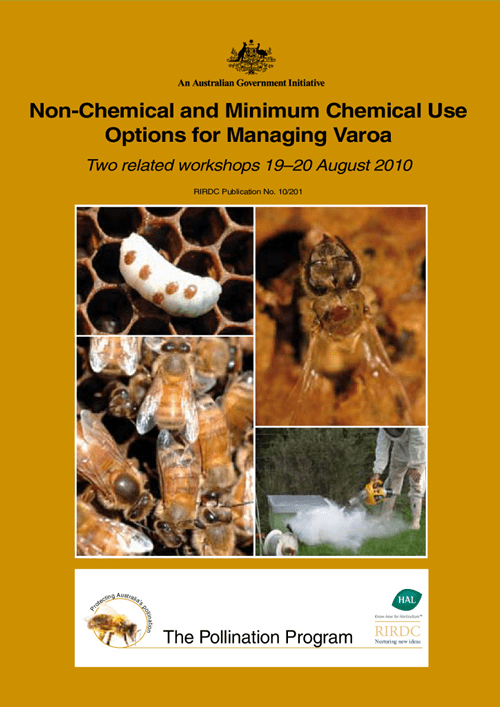Determining the impact of Varroa on virus transmission in Australian bees
This research aimed to contribute to ongoing surveillance of the Australian honey bee virus landscape as varroa establishes and spreads.
 HONEY BEE & POLLINATION
HONEY BEE & POLLINATION 
132 pages
Published: 5 Nov 2010
Author(s): Williams, Michael
Download report PDF
DownloadPurchase a hard copy - AUD $55.00
Two related workshops 19–20 August 2010 Varroa destructor (Varroa) is a serious pest of honeybees. Untreated Varroa will cause the death of affected honeybee colonies and a loss of production from plant industries dependent on honeybee pollination. Almost alone on the world stage Australia remains free of Varroa mite infestation. It is expected that Varroa will likely infest Australian honeybee hives sometime in the future. Therefore a window of opportunity exists for the honeybee and pollination dependent industries to learn from overseas experience and research best practice non-chemical and minimum chemical use options for management of Varroa under Australian conditions. This report summarises outcomes from two related workshops convened by RIRDC and its pollination research partner Horticulture Australia Limited (HAL). The purpose of the workshops was to review control options, identify research projects and to raise Varroa management awareness. While chemical use may be a necessary short term response to Varroa infestation, viable longer term non-chemical R&D requirements are scoped in this report. Non-Chemical R&D needs include measures to address industry profitability, prevention strategies and pre-incursion option evaluation. Communication messages developed during the workshops focus on the need to educate both beekeepers and pollination dependent plant industries.